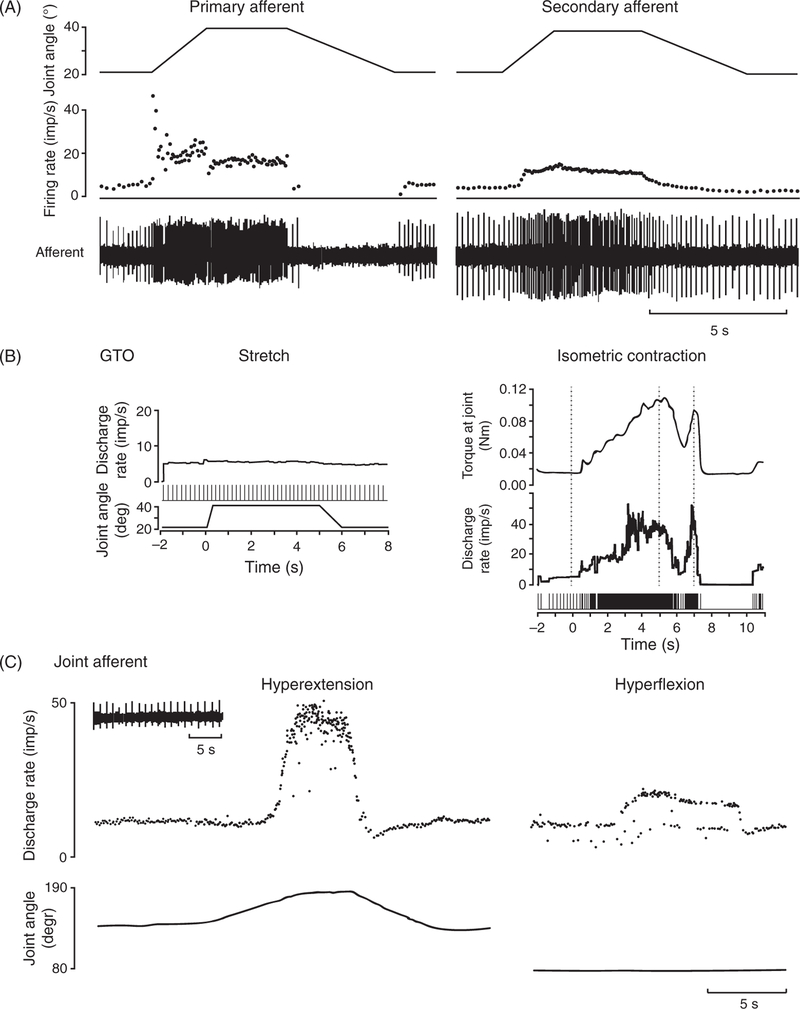Figure 2.
Typical responses of proprioceptive afferents. (A) Responses of a primary (left) and secondary (right) spindle afferent from the finger extensors muscles to passive ramp and hold stretches applied to the metacarpophalangeal (MCP) joint. Primary afferents tend to be more sensitive to changes in length than secondary ones. Adapted, with permission, from (95). (B) Golgi tendon organ (GTO) do not respond to passive ramp and hold stretches (left) but respond robustly to isometric contraction (right). Adapted, with permission, from (96). (C) Responses of a joint afferent associated with the proximal interphalangeal joint of the index finger during passive manipulations. Joint receptors tend to only respond at the extrema of joint movements, perhaps to signal the threat of injury. Adapted, with permission, from (30).

